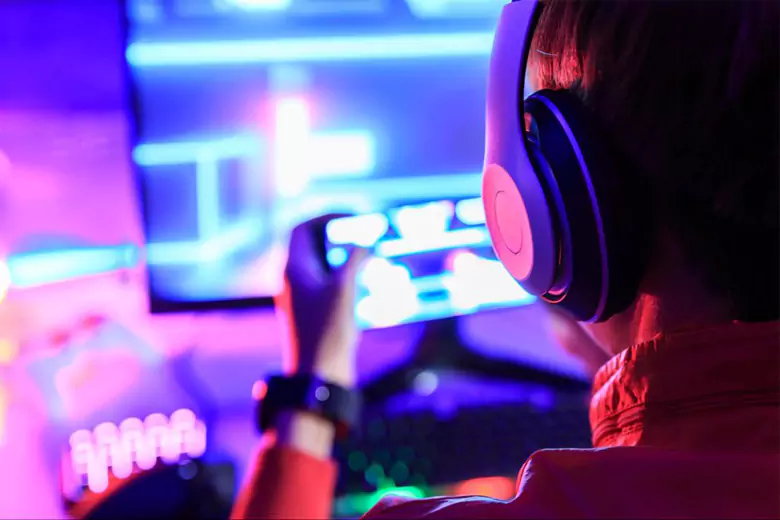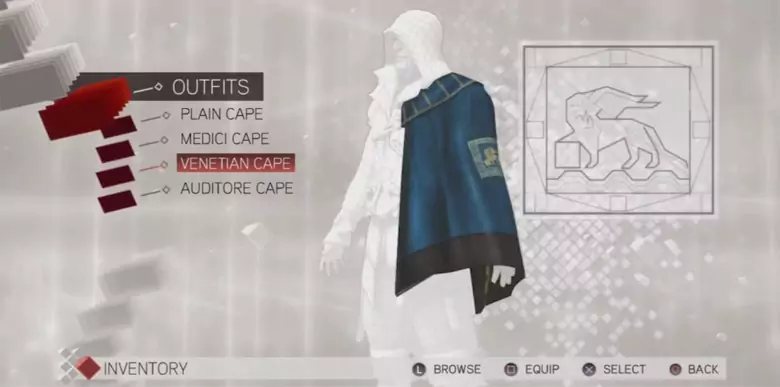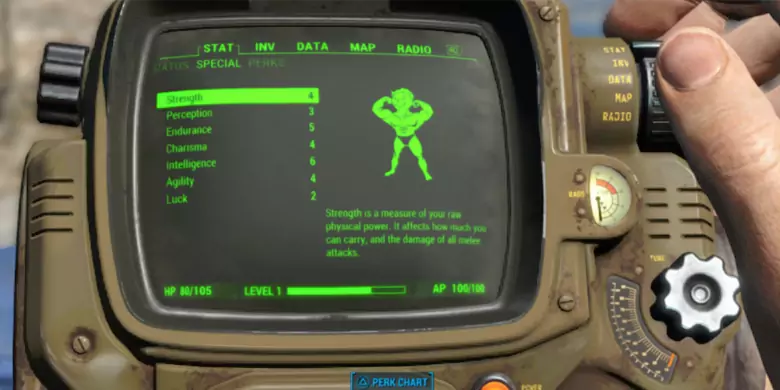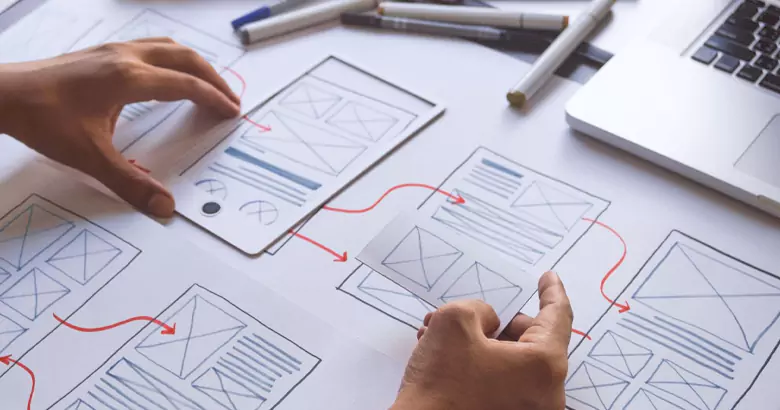Are you interested in learning about game UI design? Take a look at our comprehensive guide for definitions, tips, trends, and key examples in this booming industry.
UI design plays a key role in the experience of gamers. This is because it is responsible for the interactions and environments that define how players engage and interact with the world of the game. When creating scenarios, images, and iconography, the game UI designer strives to enhance the immersive playing experiences of gamers while making the game accessible, navigable, understandable, and visually appealing. But how do they do this? What principles do they follow? And which tools do they use to achieve such realistic and compelling interfaces?
If these are questions you’d like answered, then you’re in the right place. In this article, we’d like to explore game UI design in its entirety, from its importance in the gaming world to key elements, top tools, and current trends. To finish, we’ll be running you through some world-class examples of game user interfaces so you can see for yourself how powerful game UI design can be.
Contents:
- What is game UI design?
- What is the importance of UI in the gaming experience?
- Key elements of game UI design?
- Principles of effective game UI design
- Top tools used in game UI design
- Tips for game UI design
- Current trends in game UI design
- Examples of great game UI design
- Conclusion
Let’s dive into the world of UI design in gaming!

What is Game UI Design?
A game UI (user interface) is the visual structure within which players navigate a game, uncover the information they need to play, and achieve the goals of the game. Game UI design is the process of crafting this interface, including design elements like menus, buttons, icons, HUDs (Heads-Up Displays), and all interactive controls. These graphical indicators and visual cues aim to be both aesthetically pleasing and intuitive, guiding the player through the game, optimizing the overall playing experience, and reducing player confusion or frustration.
Some commonly used UI design elements and icons in video games include:
- A health bar - this is a visual indicator of the player’s health status
- Action prompts - these are buttons or controls that guide player actions (such as “Press J to jump”.)
- Score or point tracker - this is a display of the player’s current score
- Ammo/resource counters - this is a display of a player’s available ammunition, currency, tools, or materials
The role of game UI design is to create a seamless bridge between players and the game as well as provide players with a smooth and enjoyable gaming experience. They do this through the creation of interfaces that combine optimal functionality, seamless interactions, and visual appeal while aligning with the styles and themes of the game.
What is the Importance of UI in the Gaming Experience?
UI holds significance in the world of game creation due to its role as the primary means of communication between the player and the video game. When a game’s UI is successfully designed, players have direct and clear access to the information they need, game-specific controls, and live ongoing feedback. Together, these features facilitate totally immersive experiences and interactions. The UI of a video game should also:
- Guide the player through difficult challenges
- Support inventory management
- Help the player understand their goals and objectives
- Navigate the world of the game smoothly
- Support the player’s full immersion in the world of the game
When the UI of a game is poorly designed or cluttered, a game can feel disjointed or lacking flow, confusing players and mitigating their enjoyment of the game. A player wants to stay immersed in the world of the game and any distraction from that–as can occur through the implementation of poor UI–interrupts play and creates a poor user experience. When designed by an expert, the game interface should go unnoticed by players.
Key Elements of Game UI Design
Let’s go over some important aspects of game UI design from menus and navigation to buttons and controls.
Menus and navigation
In game UI design, menus and navigation are a player’s route to game functions, settings, help, and information. They are typically designed to support players in finding and choosing options and getting around the game quickly and without barriers. Game UI designers prioritize a smooth, seamless, accessible, and intuitive user experience when designing navigation in order to keep user frustration to a minimum and enable the player to stay fully immersed in the world of the game. When it comes to well-designed menus, game UI designers seek to offer intuitive organization. This minimizes a player’s cognitive load when selecting actions such as starting a game or managing inventory.
HUD (Heads-Up Display)
A crucial element of game UI design is the HUD or Heads-Up Display. This design element displays a player’s status in the game such as how much ammunition they have, their health, or how many of their objectives have been achieved. Positioned on the game screen, the HUD is a constant presence throughout the game, providing players with access to this important data without disrupting play and thus enabling them to stay immersed in the world of the game. The goal of the HUD is to be an unobtrusive source of important player information that communicates crucial game details at a glance. When designed effectively, players can focus their full attention on playing the game without being overwhelmed or distracted by this information.
Icons and visual cues
Representing actions, items, or game mechanics, icons, and visual cues such as flashing indicators or color changes are key components in game UI design. They negate the need for lengthy text or instructions by instead communicating information visually. These design elements enhance player-game interactions as they enable players to stay informed of, for example, changes in the game state, without breaking the player’s immersion in the game world.
Examples of icons or visual cues that you might commonly associate with video games include:
- Health icons such as hearts indicate a player’s health
- Objective markers to guide players toward their next goal
- Enemy alerts indicate where enemies are attacking from
- Cooldown timers to convey when a tool is ready to be used again
- Danger zones to warn players of imminent danger
Buttons and controls
Buttons and controls are what permit players to interact directly with tools, environments, and other characters within the game. Buttons are a UI element within the interface while controls are physical inputs such as keyboard keys or gamepad buttons. Buttons are generally used for actions such as jumping or pausing, and their design involves providing the player with visual feedback like color changes to show them that their action has been successful or acknowledged. Controls, which act as a bridge between the player and the world of the game, can be customized, enabling players to match actions to their preferred or most-used inputs, improving the overall gaming experience for them. The goal of both buttons and controls is to create an environment that feels highly responsive to the player and one in which important actions are straightforward and intuitive to perform.

Principles of Effective Game UI Design
What are the key principles of game UI design that every designer should know? We explain them here.
Simplicity and clarity
Game UI designers will always seek to prioritize clear and simple interface design by removing or reducing any non-essential design elements that might clutter the interface or distract players from achieving their goals. At the same time, information that players need to know while playing, such as control prompts or their character’s health status, is designed to be quick to identify and understandable at a glance. Simplicity and clarity are considered key principles of UI game design because uncluttered interfaces reduce the user’s cognitive load and enable them to concentrate on what they are there to do–play the game.
Consistency
As in all fields of UI UX design, consistency in UI game design is key. This is because consistent design icons, patterns, and interactive elements enable players to quickly familiarize themselves with the interface, reduce their learning curve with a new system, and help them find what they need swiftly. Additionally, consistent design reinforces a cohesive aesthetic and supports a game’s branding and themes which in turn contribute to a more positive user experience for players.
Consistency in game UI design typically involves adopting uniform:
- Visual styles such as typography, color schemes, and iconography
- Terminology such as for menu options, commands, and notifications
- Layouts
- HUD elements, for example, keeping health bars, resource counters, and point systems in the same place and format throughout the game
- Animation styles
- Interaction patterns and feedback mechanisms
Feedback and responsiveness
In order for players to fully understand the effects of their actions, interactions, and game decisions, timely feedback and responsiveness within video game design are essential to the success of the game. This might include visual or auditory cues when events occur in the game or when a specific action is taken. In addition to aiding players understanding of how the game works and what is expected of them, this ongoing feedback helps players to know that their inputs are being recognized, confirmed, and processed by the system and influencing the course of the game.
Examples of how feedback and responsiveness might be displayed to players include:
- Button press animations
- Sound effects when an action occurs
- Loading indicators such as progress bars or spinning icons
- Real-time HUD updates
- Error messages or notifications
Accessibility and usability
Through the use of customizable options and alternative input methods, game UI designers seek to produce interfaces that enable all players to access and enjoy playing video games, including those with diverse needs or disabilities. Adjustable font sizes and colorblind modes are just two examples of how designers can accommodate different preferences and needs while enhancing the overall player experience of their game.

Top Tools Used in Game UI Design
Want to know which tools to use when designing your game interfaces? These are the industry frontrunners when it comes to UI design software and tools.
Adobe XD
If you have previous experience in either UX or UI design, you’ll know that Adobe XD is a leading tool for designers. For game UI designers, it’s no different. Adobe XD is commonly used to create wireframes and interactive prototypes of game interfaces, enabling real-time feedback from other designers and project stakeholders and streamlining workflows. This highly collaborative tool integrates seamlessly with the rest of the Adobe tools suite, supporting the creation of high-fidelity designs of a game’s interface.
Figma
Figma is another hugely popular tool in the field of design thanks to its versatility, accessibility, version control, cross-platform compatibility, and responsive design features. For game UI designers, a particular benefit is the cloud-based platform’s facilitation of team member collaboration, meaning a game’s interface can be worked on by multiple designers simultaneously and in real time. Commonly used to create interactive prototypes of video games, Figma enables designers to test, refine, and iterate on UI elements, transitions, and the player experience before any design specifications are handed over to the development team.
Sketch
For the creation of high-fidelity, vector-based game interface designs, Sketch is the all-in-one go-to platform for design teams. Particular highlights of the tool include:
- A library of symbols and reusable components
- A range of plugins to support designing, prototyping, and integration with other tools
- Its intuitive interface that’s great for beginners and experienced designers alike
- Built-in prototyping features
The tool stands apart from its competitors in the field of game UI design due to its efficient and robust design environment and wide range of versatile features. Offering artboards and layer management tools, designers have the option to create interactive states that support the generation of complex game menus and HUDs, while integration opportunities streamline teamwork and support ongoing collaboration.
Unity
Enabling game designers to create powerful animations and realistic images, Unity is a hugely successful, cross-platform 2D/3D game development software. The tool boasts a range of features supporting game design and creation for various platforms including PCs, consoles, mobile devices, virtual reality, and augmented reality which makes it a versatile choice for designers and developers looking to deploy their games to different markets. Unity is particularly popular as it enables designers to create interactive and dynamic game interfaces directly within the development environment, with menus, HUDs, and other interface elements already built in. Additionally, designers can utilize the tool’s scripting features which facilitate the implementation of detailed animations and interactions, enabling designers to build interfaces that adapt in real time to player input and changes in the game.

Tips for Game UI Design
When crafting game interfaces, keep these tips in mind.
1. Prioritize simplicity
The interface should be navigable and intuitive in order to avoid overwhelming or distracting players.
2. Be consistent
Whether you’re designing fonts or buttons, consistency is key in game UI design. This is because players can more quickly learn how the interface works when icons are uniform.
3. Don’t neglect feedback
Using visual and audio cues, acknowledge the actions players have taken. By providing real-time feedback, users can be sure their inputs are recognized which builds trust and increases the satisfaction of playing.
4. Display information clearly
Information that is needed by players to successfully play the game should be prominently displayed and clearly designed so that users can digest it at speed.
5. Make your interfaces accessible
By including features like larger text options, customizable controls, and colorblind modes, you can better cater to players with different needs and preferences, in doing so boosting the overall accessibility of your game.
Current Trends in Game UI design
What’s currently trending in game UI design? We run you through what design teams are getting excited about.
Minimalism
A growing trend in game UI design is minimalism, whereby game designers hone in on simplicity and functionality and avoid elaborate decoration or detail during the design of game interfaces. This approach, which removes non-essential elements and promotes the use of white space, emphasizes clarity. What this means is that players of the game can find the information they need without being distracted or overwhelmed by unnecessary icons or purely aesthetic details. Popular traits of minimalist game design include:
- Clean lines
- Ample white space
- Subtle, sleek, and modern animations
- Limited color palette
- Minimally-styled typography
- Simple, intuitive icons
- Transparent or hidden menus
Motion and animations
Motion graphics and animations in video games are integral to the gaming experience as they make it feel more immersive and alive for players while improving navigation and supporting smoother transitions between different environments or game states. Motion and animations can be used in button hover effects, menus, and visual feedback, increasing the sense of responsiveness, highlighting key information, or signaling important changes in the game. Areas where motion and animations are frequently used include:
- Menu transitions
- Button hover effects
- Loading animations
- Health and progress bars
- Goal unlocks
- Quest updates
Personalized UI experiences
In keeping with so many of our online and digital experiences, the gaming industry increasingly offers personalized UI experiences for players, providing tailoring opportunities within the interface to meet individual preferences and playing styles.
Examples of personalization opportunities include:
- Adjustable HUD layouts
- Scalable fonts
- Customizable control schemes
- Colorblind modes
- Theme and skin options
- Language and localization options
- Audio customization
In addition to the settings a player can manually adjust, some games are using data-driven design to change the UI of the game dynamically, offering players new modes or layouts based on their previous playing behavior. This move mirrors the general trend towards more player-centric game design which has seen video game interfaces become more inclusive and adaptable to a wider range of audiences.
Examples of Great Game UI Design
Let’s take a look at some examples of world-leading game UI design taken from some of the most popular video games available.
Assassin’s Creed

Why is the game UI design for Assassin’s Creed good?
The user interface design of the video game Assassin’s Creed is considered by gaming experts and players to be a great example of immersive video game experiences for the following reasons:
- It takes a minimalist approach to design which prevents screen clutter and enables players to more easily identify and reach their goals.
- Many of the UI elements are integrated into the game which enhances the immersive experiences for players.
- The story behind the game and the game’s UI are intertwined. This seamlessly connects the player and the game.
- Clear indicators, markers, and minimaps combine to create excellent in-game navigation.
- Customizable HUD enables players to adjust their experience of the game to match their playing prowess and preferences.
- Subtle audio and visual player feedback ensures the player is not taken out of the immersive experience.
The Fallout Series

Why is the game UI design for The Fallout Series good?
Highly regarded by many in the gaming industry, let’s take a look at the game UI design of The Fallout Series and why it has led to its huge success.
- The Pip-Boy is the central UI design element of The Fallout Series, an in-game wrist computer. The use of this in-game tool seamlessly blends the interface with the world of the game.
- Navigation within the Fallout Series interface is considered world-class among gamers. This is down to clearly-labeled sections and easy-to-browse categories (within Pip-Boy) which ensure players are not overwhelmed and can access the information they need swiftly.
- The UI facilitates the seamless inventory and management of large numbers of items such as weapons which is an important element of role-playing games (RPG).
- Immersive quest management, including well-organized quest logs, enables players to stay fully oriented in the world of the game.
Conclusion
And that’s a wrap! Everything you need to know about game UI design. In this guide, we’ve covered game UI design’s top tools, best practices, trends, principles, and key elements, as well as provide you with some stunning examples of game UI design from which you can take inspiration. We hope that, with this guide, you not only have a clear idea of what a game UI designer does but also the importance of this field in developing compelling and intuitive games.
Next Steps
If you’re considering a career in the exciting, creative, and rewarding field of UI Design, head back to the AND Academy blog for more insightful articles or check out AND Academy’s range of design courses that offer mentorship and career support. You can also refer to this UI UX Project by AND Leaner, Yash Ramdas, to learn more about how to apply UI design principles in real-life projects.
In case you think you need further assistance, here are some of our resources you can consider:
- Watch this session by Shiva Viswanathan, Design Head of Ogilvy Pennywise, and Naman Singh, Product Experience Designer at RED.
- Talk to a course advisor to discuss how you can transform your career with one of our courses.
- Pursue our UI UX Design courses - all courses are taught through live, interactive classes by industry experts, and some even offer a Job Guarantee.
- Take advantage of our scholarship and funding options to overcome any financial hurdle on the path of your career transformation.
Note: All information and/or data from external sources is believed to be accurate as of the date of publication.










